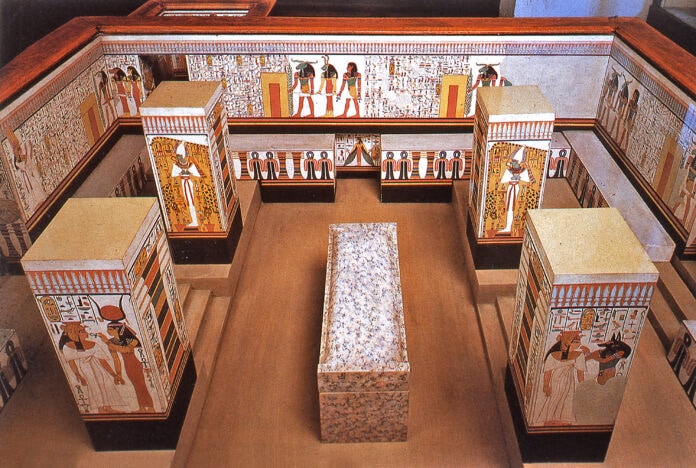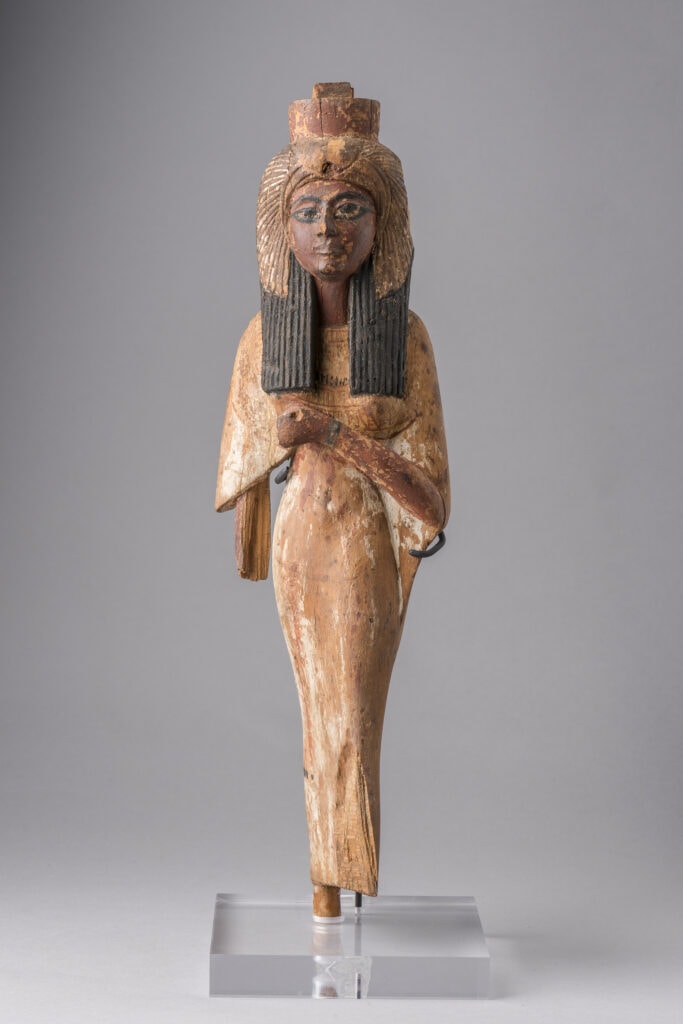
“Queen Nefertari’s Egypt,” a dazzling exhibition showcasing ancient Egypt’s “most beautiful queen,” opens at the Kimbell Art Museum Dec. 6. Called “the one for whom the sun shines,” Nefertari was the favorite wife of powerful Pharaoh Ramesses II. The exhibition explores the lives of Queen Nefertari and other women of ancient Egypt through 230 objects, showing the richness of Egyptian culture 3,000 years ago. Objects from temples, tombs, palaces, and the artisan village of Deir el Medina are on display at the Kimbell through March 14, 2021.
The exhibition highlight the role of women in Egypt’s New Kingdom (c. 1529-1075 B.C.). The objects on display are drawn from the Museo Egizio in Turin, Italy, one of the most important and extensive collections of ancient Egyptian works in the world. Majestic statues, exquisite jewelry, decorated vases, papyrus manuscripts, carved steles, splendid stone sarcophagi and intricately painted wooden coffins are on display. Tools and items of daily life from the craftsmen who built the royal tombs are also shown in the exhibition.
“Ancient Egypt has long fascinated the modern world,” said Eric M. Lee, director of the Kimbell Art Museum, “and we are thrilled to present this remarkable exhibition that is altogether alluring, grand, exotic and captivating. We are especially grateful to the Museo Egizio for lending us this extraordinary collection of objects.”
Queen Nefertari
Nefertari ranks along with Hatshepsut, Nefertiti and Cleopatra as one of the most celebrated queens of ancient Egypt. She was the Great Royal Wife, the favorite of Pharaoh Ramesses II (reign 1279 to 1213 B.C.). He was known as a builder of grand monuments, vast tombs and monumental temples. Few details are known about Nefertari, but archaeological records reveal that she was educated and could read and write hieroglyphs, and used her skills to assist the pharaoh in his diplomatic work. Queen Nefertari was known only through a few finds, like sculptures, tomb paintings and hieroglyphs related to Ramesses II, before the early 1900s.

Deir el-Medina New Kingdom, 18th dynasty (ca. 1539–1292 B.C.E.)
Wood Cat. 1389 Museo Egizio, Turin, Italy
Italian archaeologist Ernesto Schiaparelli, who was also the director of the Museo Egizio, uncovered Nefertari’s tomb in 1904. It was found in the Valley of the Queens, and near the ancient capital of Thebes. Upon opening the tomb, he discovered brilliantly painted scenes depicting Nefertari’s perilous journey Nefertari to appease the gods on her path to immortality. While robbers had looted most of the tomb’s contents, the objects recovered and on display hint at a magnificent treasure trove of provisions for the queen’s afterlife.
Pharaoh Ramesses II
The Kimbell’s exhibition opens with a monumental granite sculpture of Nefertari’s husband, the great pharaoh Ramesses II. The Pharaoh is seated between the sun god Amun and his wife, the goddess Mut—the two patron deities of Thebes. The Pharaoh was considered the incarnation of Horus, son of the sun god Ra, temporarily living among mortals. Death was thought to transform him into a full god, Ra. While on Earth, the pharaoh was charged with maintaining justice, truth, order, and cosmic balance.
Egypt’s queens played an important role in religious celebrations, representing the female aspect of the divine on Earth. The goddess Mut—whose name means “mother”—embodied the ideal Egyptian woman. She was a supportive and dutiful wife, a powerful queen, and an honored goddess. This blend of qualities made her a role model for women in all spheres of Egyptian society. Nefertari was also known as Nefertari Meritmut, which means “Beloved of [the goddess] Mut.”
The Kimbell Art Museum, 3333 Camp Bowie Blvd. in Fort Worth, is open for visitors. For more information about Queen Nerfertari’s Egypt or other Kimbell Art Museum exhibitions and events, please visit kimbellart.org.














